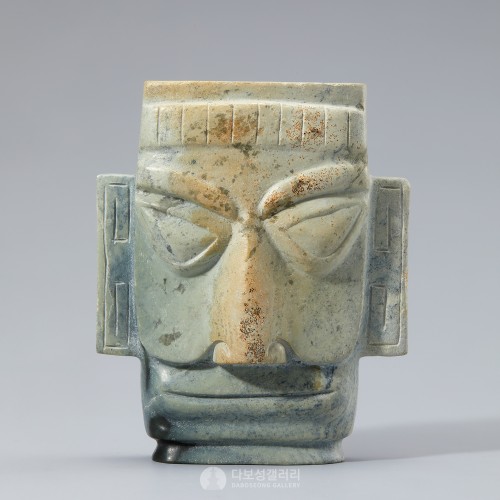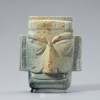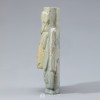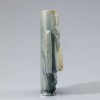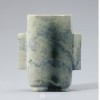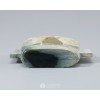본문
작품 정보
이 옥인면상(玉人面像)은 전체적으로 직사각형 모양이며, 굵은 눈썹, 물방울 모양의 눈, 곧게 뻗은 코, 커다란 입을 가지고 있습니다.
거칠고 소박하면서도 당시 현실을 반영하는 유물이라고 할 수 있습니다.
홍산문화(紅山文化)는 기원전 4700년부터 기원전 2900년 사이에 중화인민공화국 내몽골과 랴오닝성에 존재했던 신석기 시대의 문화입니다. 명칭은 옥기(玉器) 등 신석기시대 유물이 다량으로 출토된 내몽골자치구의 츠펑시(赤峯市)에 있는 붉은 산[紅山]에서 유래했습니다. 이 시대의 뉘우허량(牛河梁) 유적의 여신묘(女神墓)에서는 눈을 비취로 만든 여신상(女神像)을 비롯해 곰·용·거북·멧돼지 등의 동물 모양의 옥기가 다량으로 발견되었습니다. 홍산문화는 문자와 청동기가 없던 시대임에도 국가 단계로 보고 있습니다. 그 이유는 다량의 옥기가 출토되었기 때문이며, 이에 홍산문화를 ‘옥기 시대’로 규정하기도 합니다.
━━━━━
该玉人面像整体呈正方形模样,粗眉、滴水形眼睛,直鼻,阔嘴。
此头像琢工粗犷朴拙,书写现实。
红山文化是在公元前4700年到公元前2900年间存在于中国内蒙古和辽宁省的新石器时代的文化。名称来源于出土大量玉器等新石器时代文物的内蒙古自治区赤峰市的红山。在该时代的牛河梁遗址的女神墓中,发现了大量以翡翠做成眼睛的女神像、熊、龙、龟、野猪等动物模样的玉器。红山文化在没有文字和青铜器的时代,但被看作是国家阶段的理由正是因为出土了大量玉器,因此红山文化也被定义为“玉器时代”。
━━━━━
A rectangular jade face figurine with thick eyebrows, droplet eyes, a strong, straight nose, and long, sealed lips, overall plain and realistic.
The Hongshan culture was a Neolithic culture stretching from Inner Mongolia to Liaoning and dated from about 4700 to 2900 BC. The culture is named after Hongshan(红山), a site in Hongshan District, Chifeng, where many Neolithic artifacts, such as jade ware, have been excavated. A clay goddess head with jade inlaid eyes was discovered in "the Goddess Temple" at Niuheliang, along with many animal jades such as bears, dragons, turtles, wild boars, and so on. Hongshan culture is regarded as a nation even without bronze ware and a writing system because of many jade wares excavated from the site, which made Hongshan culture defined as the 'Jade Age.'
CONDITION
NOTICE
상담/문의 : 02- 730-5601 / 02- 730-7566 